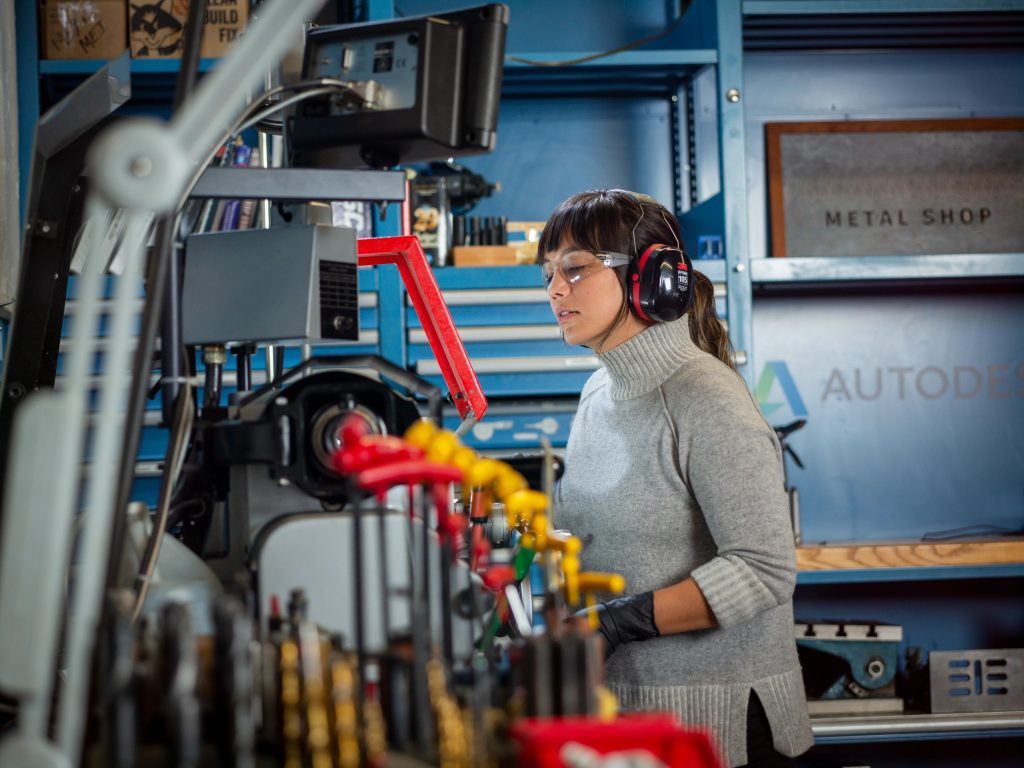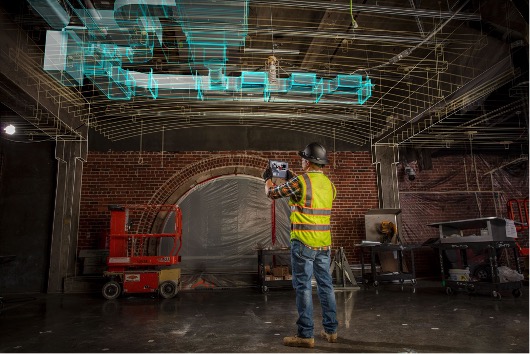
View the full report here.
Takeaway #1: Continuous Learning is Key
One of the most striking findings was the shift away from requiring a bachelor’s degree in favor of valuing skills and experience. At Autodesk, we believe higher education is valuable, but this research emphasizes that practical skills and real-world experience are increasingly critical when matching talent with roles. In the U.S., construction job postings saw a noticeable shift in 2020, while in manufacturing, most roles had no explicit education requirement since 2016. In the U.K., 82% of construction and manufacturing job postings in 2020 didn’t specify a formal education level. In Germany, short-cycle tertiary education was the norm. This trend reflects what I’ve seen over the years—workplaces are changing fast, and so must our approach to learning. For many roles in construction and manufacturing, employers now look for candidates who can demonstrate mastery in specific areas. Continuous learning through certifications, training programs, and on-the-job development is vital for staying relevant. Rachel Sederberg, Senior Economist at Emsi Burning Glass, shared her thoughts: “This report shows that training future workers, upskilling current employees, and identifying how skills can bring stability in the face of technological change offers a powerful opportunity. In all three regions, the growing importance of skills suggests that companies are starting to prioritize competence over formal education when it comes to finding the right people.â€Takeaway #2: The Impact of Automation
Automation has been one of the most significant byproducts of the digital transformation taking place in workplaces. As technology advances, it's reshaping not only tasks but also the types of jobs available. While automation can make work safer and more efficient, it also raises concerns about job displacement. At Autodesk, we see the potential of automation to enhance productivity and safety. However, we also recognize that workers need to adapt. This report aimed to explore how individuals can use their existing skills to transition into new, more secure roles—and how new positions might emerge as a result of automation. According to the research, many workers can leverage their current skill sets to pivot into higher-paying, less automatable roles through informal learning and training. Rachel added, “For example, someone at high risk of being replaced as a Quality Inspector/Technician can transition into a Production Supervisor role by learning just a few new skills. This not only protects them from automation but also increases their earning potential.â€
Takeaway #3: Skills and Roles on the Rise
The report also highlighted emerging trends in the types of roles and skills that will be in high demand in the near future. Some key points include: - Despite the move away from traditional degree requirements, there's still strong demand for both technical and non-technical skills. Data analysis and management skills are particularly sought after. - Logistics and supply chain management gained visibility during the pandemic and are expected to remain critical in the coming years. - Renewable energy-related roles in manufacturing are projected to grow significantly, signaling the need for workers to adapt to new technologies and methods. As industries continue to evolve and merge, choosing a specific field of study or pursuing a degree is becoming less important than developing a mindset of lifelong learning. We believe that employees thrive when they stay curious, continuously acquire new skills, and pursue meaningful roles. A second report from Emsi Burning Glass examining the state of skills and jobs in the Asia-Pacific region is also available.Read more about how Autodesk is committed to helping our customers, communities, and employees succeed in the age of automation.
In terms of building materials, industrial products, daily necessities, floor leather, floor tiles, artificial leather, pipes, wires and cables, packaging films, bottles, foaming materials, sealing materials, and fibers, PVC was the world`s largest production of general-purpose plastics, and its applications are very widely. Widely used in all aspects
PVC is a white powder with an amorphous structure. The degree of branching is relatively small. The relative density is about 1.4. The glass transition temperature is 77~90°C. It begins to decompose at about 170°C. It has poor stability to light and heat. After prolonged exposure to sunlight, it will decompose to produce hydrogen chloride, and further automatically catalyze the decomposition, causing discoloration, and the physical and mechanical properties also rapidly decline. In actual applications, stabilizers must be added to improve the stability of heat and light.
The production process of PVC Resin SG8 and PVC RESIN SG5 is basically the same, and the production equipment is exactly the same. The main difference lies in the formulation of additives, polymerization temperature, reaction pressure and so on. The reaction temperature and reaction pressure of SG-8 resin have basically reached the working pressure limit of the polymerizer. The reaction requirements are relatively strict, and the requirements on operation, safety, technology, and personnel quality are more stringent, and the resin quality is more difficult to control.
PVC RESIN SG8,Pvc Resin Sg8,Pvc Resin K58,Suspension Pvc Resin
Henan Shunbang Chemical Industry CO.,Ltd , https://www.pvcresinchemical.com
